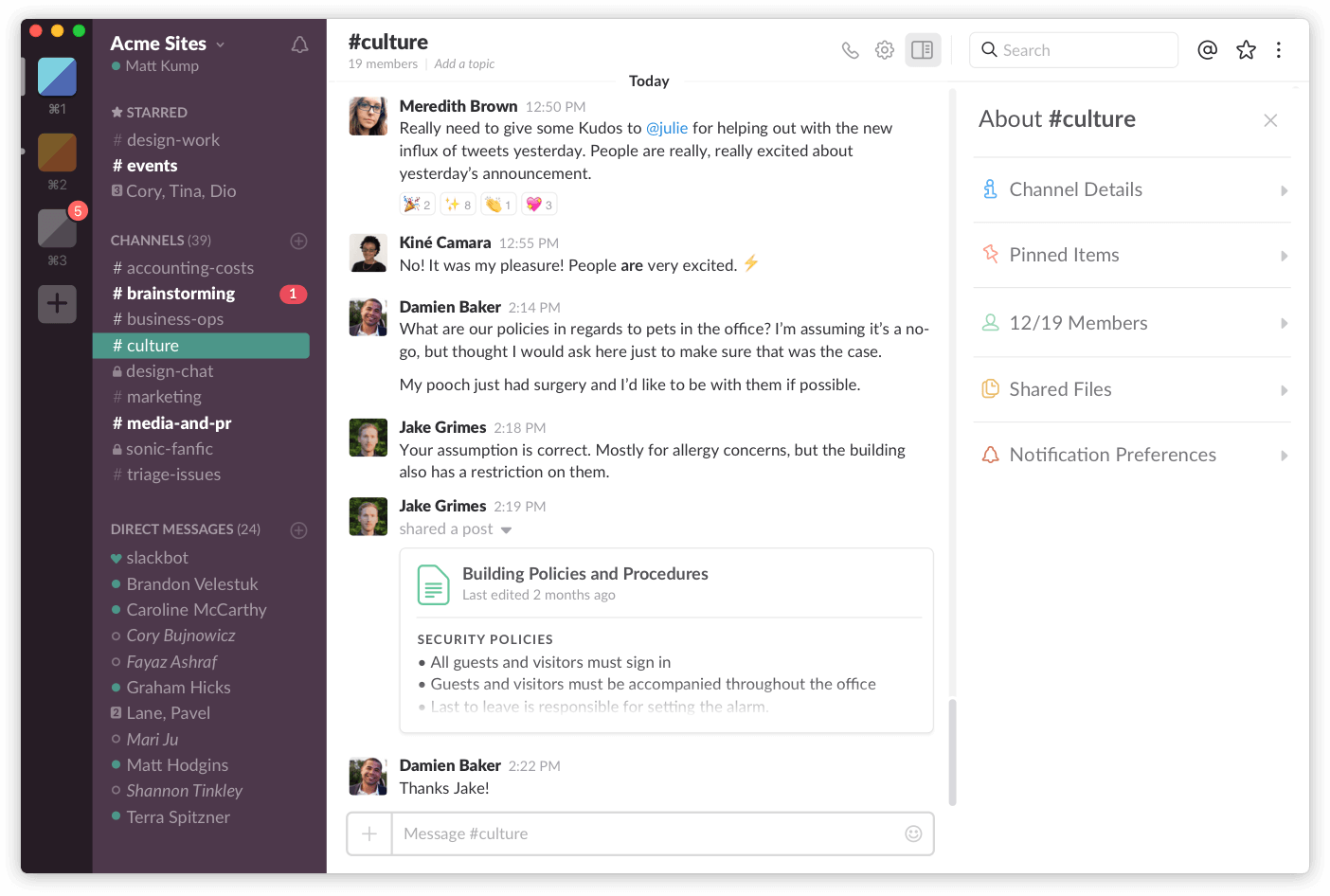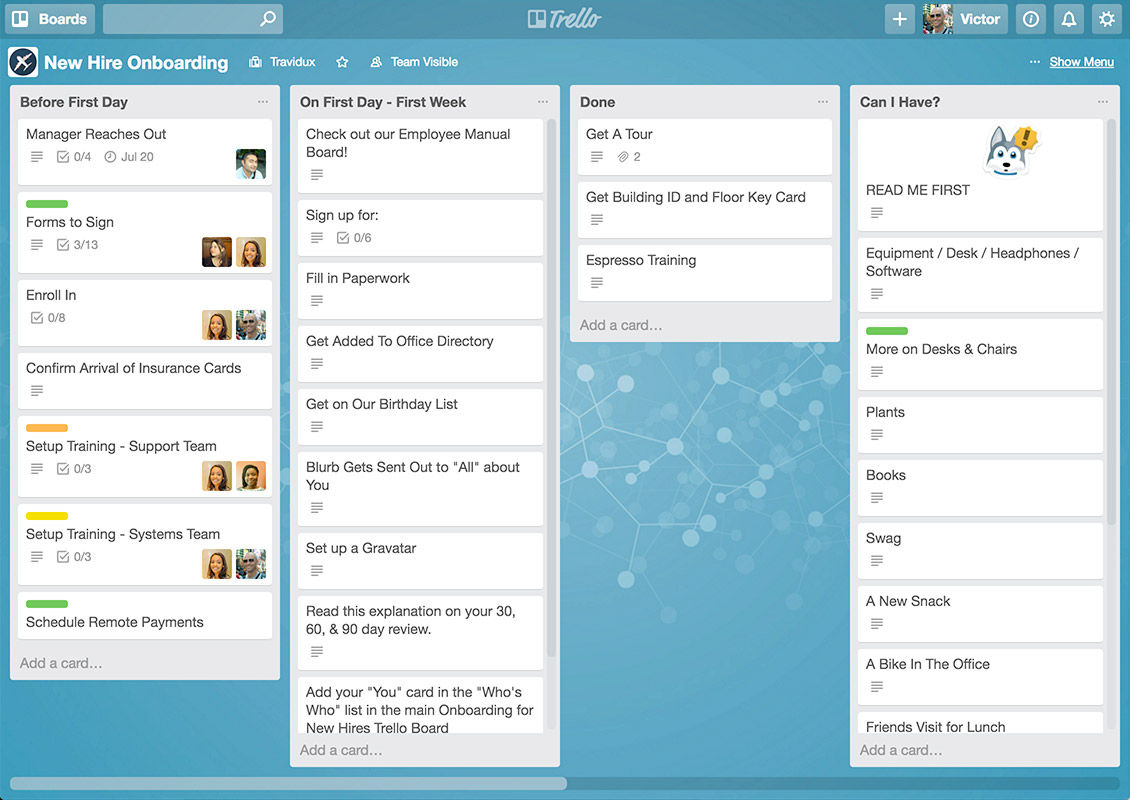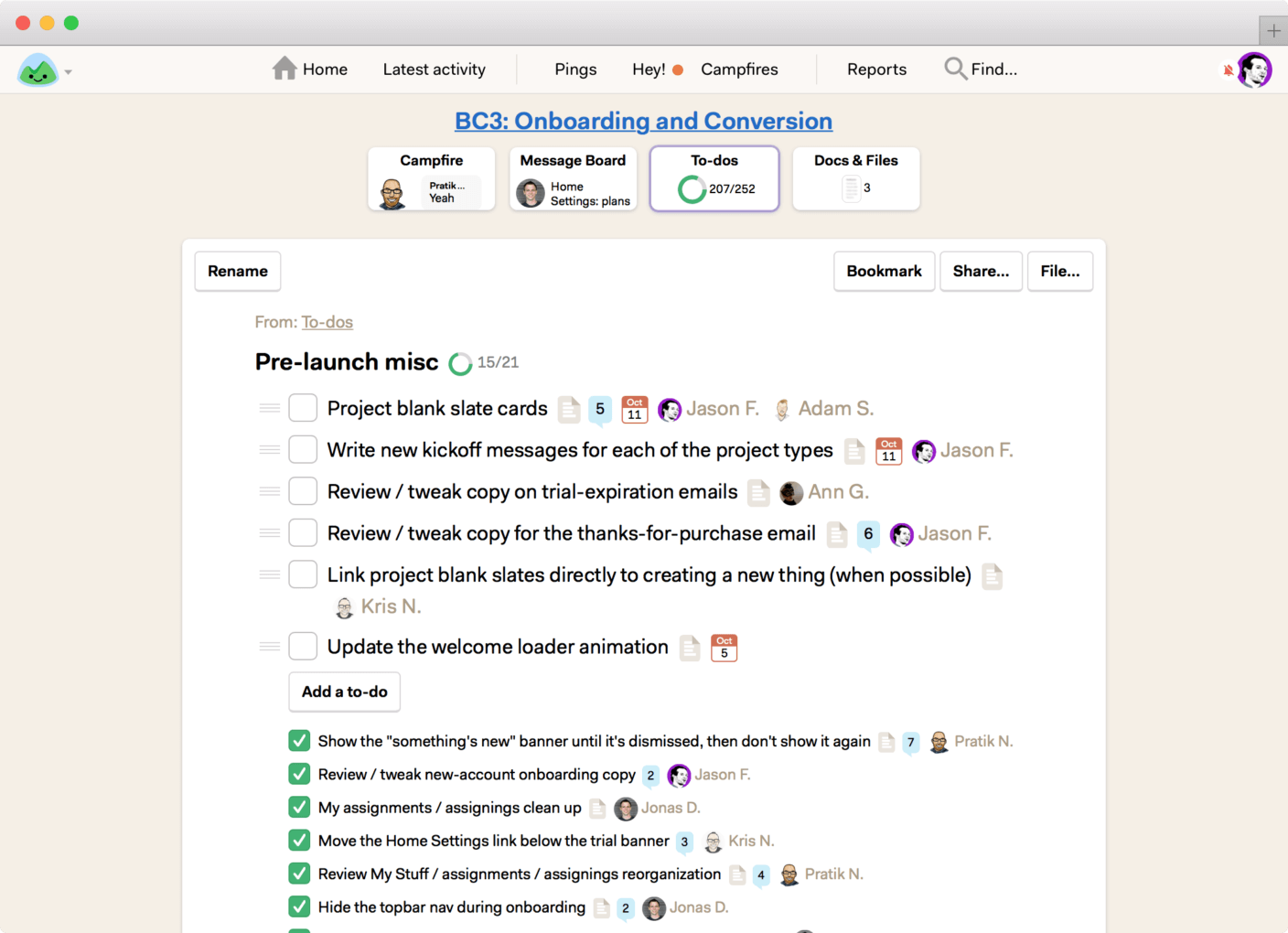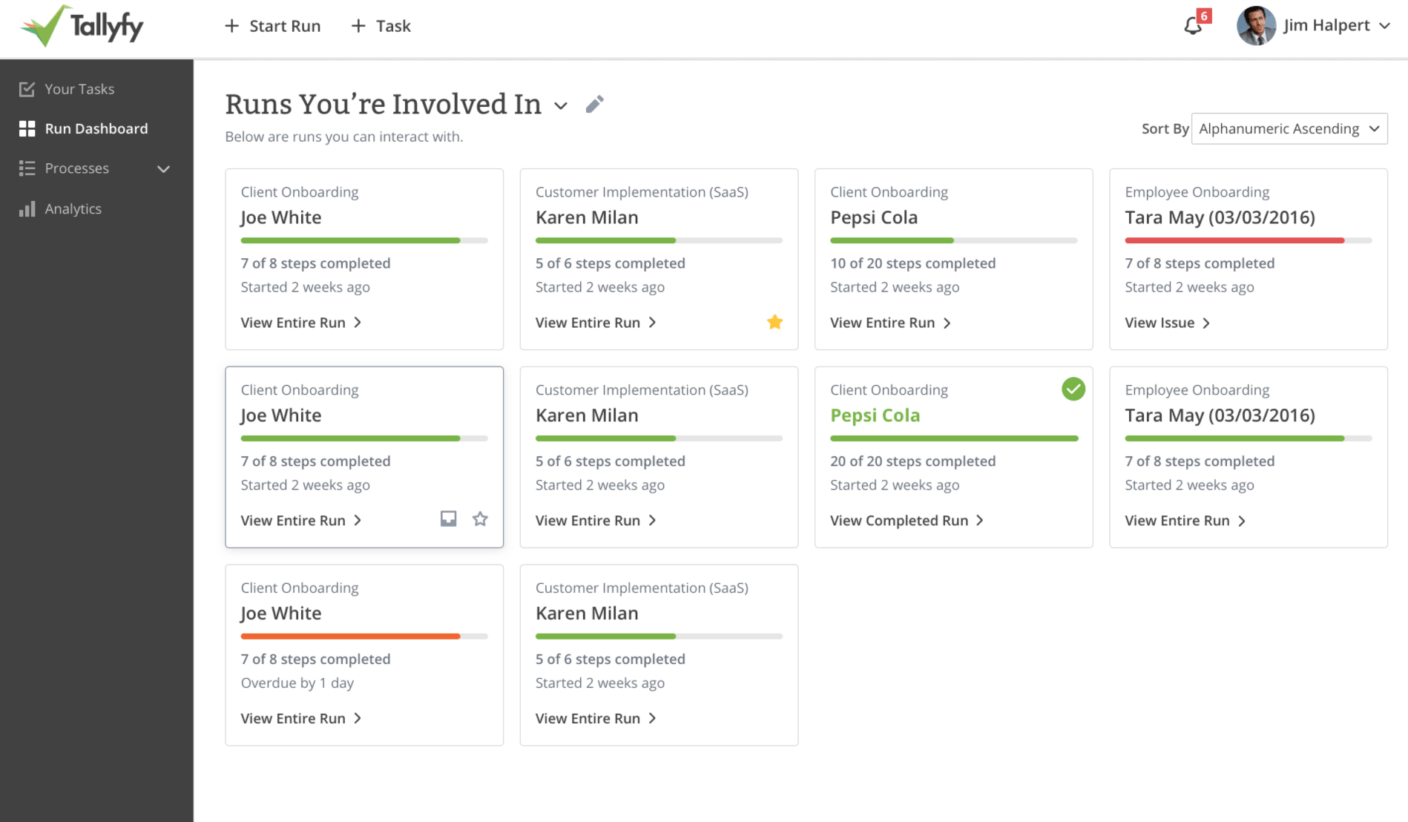It’s no secret that remote work can be amazing for your business.
It allows you to hire the very best talent all over the world without the hassle of issuing visas, relocation packages, and so on. And to add the icing on the cake, remote employees are noticeably more productive, engaged and happy than those working on-site.
Making a remote office work, though, is far from easy. It’s a completely different environment than a traditional office setting.
Heck, you might even have to change your hiring practices. Even if they work well for your on-site office, that doesn’t mean it’ll work for a remote team. The type of employees that excel in an office might underperform in a remote environment.
Then there’s also all the issues of communication. You can’t just tap on your co-worker’s shoulder and ask about how the new design is coming along. You’ll need to use certain software to help manage all this.
So, if you’re transitioning from an on-site to a remote workplace, or just starting up, we’ll give you a good idea of how to do this the right way. And this isn’t just some theory, either.
At Tallyfy, we’re a 100% remote team. Our employees work from all over the world, all the way from the USA to India. So, all the advice we’re giving out is tried-and-tested.
In this guide, you’ll learn…
- How to hire A-players in a remote team
- What type of tools you need to manage your remote team
- How to create and maintain a company culture within a remote team
Hire the Right People
Hiring for a remote team doesn’t work exactly the same way as with an office.
Employees that would excel in a human workplace might end up underperforming in a digital one.
You might be wondering, “How does that even work?” Someone that’s good at marketing, for example, can be good at marketing in a home, office, café or just about anywhere.
While that’s true, remote work requires very specific soft skills that not everyone has. Specifically, you’d want your employees to be…
Self-Starters
One of the main benefits of working in an office is the environment – everyone’s working on something, and you feel bad if you procrastinate or slack off.
With a remote team, this is usually not the case. Your employees should have some discipline to manage their work schedule. Ever heard of the popular “you can even work from your bed” trope?
Well, a big chunk of people can’t force themselves to do that.
You could, theoretically, set up a work schedule. In that case, all of your employees would need to online & clocked in at the same time. If you go this route, though, you can’t hire employees that are in radically different time zones (which is one of the best benefits of remote work).
So instead, you should aim for hiring employees that are self-starters. One of the easiest ways to find such employees is by determining if…
- They’ve Worked in a Startup – Any early-stage organization requires you to be self-driven. Employees that have previously worked for a startup are likely to strive in a remote environment.
- They’ve Worked Remotely – As a given, if someone’s successfully worked in a remote company, they’ll probably manage to do it again.
Great (Written) Communicators
One of the biggest benefits (and disadvantages) of remote work is the online communication.
While you can always have an occasional Skype meeting, most of your conversations with your co-workers will be through a messaging app or task management software.
For some employees – or just about any introvert – this is a godsend. You remove all the downsides that come with human interaction, such as…
- Misinterpreting Gestures – You can never really read someone’s gestures with 100% accuracy. Are they being sarcastic? Passive-aggressive? Honest? With online communication, you only see the direct communication with no emotional attachment or reaction.
- Synchronous Communication – “What do you think about this strategy?” In real-life, you’re supposed to give you an answer right there and then. Online, you have the time to think, digest the plan and give out a more appropriate response.
If the employee lacks written communication skills, though, you won’t be seeing much of the benefits we just mentioned.
Your employees need to clearly articulate their thoughts and ideas. Otherwise, they won’t be able to sell their ideas, back up their arguments, etc.
OK With Low Human Interaction
One of the coolest aspects of working in an office is the human interaction. You don’t just work 24/7 – you have a coffee break here, lunch break there.
You get some dose of human interaction.
With remote work, in most cases, your only co-worker is your pet cat. This can be a deal-breaker for a lot of employees. Even if they were all on-board with trying out remote, they’ll eventually get bored of the environment and quit.
So, when hiring remote employees, try to aim for individuals that are OK with working in a low-contact environment.
Use the Right Tools
In a remote environment, the only way to communicate with your employees is through software.
You need to digitize the following business functions…
- Communication
- Task Management
- Process Management
- Meetings
Since a big chunk of remote work is dependant on these tools, it shouldn’t be surprising that the better the software, the better your remote office.
Of course, there are hundreds of tools for each of the functions we’ve mentioned. So, we’ll only cover some of the very best ones.
Communication – Slack

In any office, you need to have direct communication, whether you’re discussing something work-related, telling a joke, or just doing small talk.
This should also apply to a digital office.
At Tallyfy, our favorite tool is, surprise, surprise, Slack.
Slack is an online group-messaging tool that makes communication a whole lot easier.
Other than the ability to directly text your co-workers, you can also create different channels for any business function. It can be anything like “management,” “marketing,” or even “watercooler talk.”
Task Management – Trello & BaseCamp
Most offices use some sort of task management tools or methodologies, such as the Kanban board. Chances are, you’ve probably used that (just about everybody has). You set up a whiteboard with tasks split into 3 categories: “to-do,” “in-progress,” and “done.”
But of course, you can’t have a space-spanning whiteboard that’s present in 3 different continents in everyone’s home. You’ll need a more digital solution.
If you want to go for something more basic, there’s Trello. It’s a digital Kanban Board, where you and your team can manage tasks, upload files, assign deadlines and so on.

The best part about Trello is its simplicity. Just about anyone can start using it without any prior experience.
If, on the other hand, you’re looking for something that packs a bit more punch, you can try Basecamp.
Basecamp is a full-blown project management software. You can set up boards for each department (marketing, sales, etc.) or project (marketing strategy for client X) and assign tasks to relevant employees.

While Trello stands out with its simplicity, BaseCamp wins in terms of functionalities and features.
Process Management – Tallyfy

Processes are an essential part of any environment, whether it’s online or offline. They’re useful for employee onboarding, document approvals, content marketing, and a bunch of other functions.
In a physical office, though, it’s easier to follow procedures. You probably have some physical SOPs, as well as a supervisor around to ask questions & make sure you’re doing everything right.
For a remote office, it’s a bit different. You need software to enforce your processes and make sure everyone’s working the right way.
Tallyfy (that’s us!) is a workflow management software that automates your processes for you. The way this works is, the software acts as a process facilitator. The employees get precise instructions on how to carry out any given step, and once they are done with their task, whoever’s in charge of the next step is notified.
As a given, you can customize the processes, set up deadlines and so on.
Meetings – CiscoWebex
As with a real-life team, meetings are essential in a remote environment. Whether it’s for catching up, goal-setting or brainstorming, you’ll need a tool to facilitate virtual meetings.
While video chat tools are dime a dozen, one of our favorites is CiscoWebex.
Other than the basic video chat functionalities, the tool has a bunch of other cool features…
- Group Chat
- Digital White Board
- File Sharing
- Integrations with 10+ Tools
Create a Remote Culture
Simply getting the work done doesn’t ensure long-term success for your company.
You need your employees to be both happy and productive, and for that, you need a company culture.
In an office, this happens organically. You celebrate employee birthdays, have team buildings, and so on. All this adds up to a unique experience, which is your company culture.
Online, though, you really need to put in the effort to create it. If you just hire employees, give them their weekly tasks and tell them to be on their way, they won’t be too satisfied with their job.
So, here’s a couple of events you could hold to create & strengthen your company culture.
Stand Up Meetings
Feeling like a part of something is important for your employees. If they only get to see their own day-to-day work, they’ll feel like a part of a machine. Clock in, do work, clock out.
There’s no feeling of unity in this, nor is there a sense of achievement, progress, etc.
So, to make sure everyone’s in the know about what’s going on, we set up weekly meetings on how everyone’s doing. We discuss things like…
- How’s everyone doing? Are there any obstacles they need to overcome? Any delays or bottlenecks? Does anyone need some guidance, help, etc.
- How is the company performing overall? Marketing talks about growth, development about new product features, etc.
- Are there any new employees? What are their roles? Who will they be reporting to? On a similar note, we also explain all the must-have information about the company and different departments.
One-on-Ones
Supervisor-employee feedback is essential for improving your business processes.
Are you sure that your employees are satisfied with their work? Do they have any input on how to do things better? Do they have any doubts about existing operations?
One-on-One meetings make it possible for you to get valuable insight from your employees. And as an added benefit, it makes your staff feel valued & appreciated.
At Tallyfy, we do monthly one-on-one meetings with the CEO. This helps spot any potential problems and lets us move on faster with our work.
How to Manage Your Remote Team – Key Takeaways
So, let’s wrap this up. To successfully manage a remote team, you need to…
- Hire the Right People – They should be self-starters, great at written communication, and OK with working with low human contact
- Use the Right Tools – Software is essential for managing remote teams. You’ll need tools for communication, task management, process management and video meetings
- Create a Remote Culture – Treat your online employees just the same as you’d treat office workers. Hold one-on-one meetings, monthly standups, and engage them as much as you can.
If you get all three right, you’re going to reap all the benefits of having a remote team and none of the downsides. Tihs, of course, will lead to your organization functioning significantly better thane ever before.
Related Questions
How do you build trust in a remote team?
Trust begins with open communication and the frequent check-ins. Organize video calls to ensure you still have face-to-face time, celebrate team successes and leave room for small talk. When team members feel recognized and heard, they’re more willing to be candid about challenges and to share ideas openly.
What’s the best way to track remote team productivity?
Focus on results also and not the hours worked. 3. Establish a clear set of goals and deadlines and utilize project management tools to stay on track and touch base regularly. The point is to measure results and impact, not track mouse clicks or screen time.
How can you maintain team culture when working remotely?
Form virtual spaces for socializing, such as coffee chats or online game nights. Announce team wins, call out birthdays, and foster casual conversation. Even in a virtual environment, regular team-building exercises maintain connection and shared values.
What are the essential tools for managing remote teams?
A solid remote setup requires three main tools: a video conferencing platform to hold meetings, a project management system for tracking work and a team chat tool to handle quick communications. Keep the tools stack simple so as not to overpower team members.
How do you onboard new employees in a remote setting?
Develop a defined digital onboarding program which has these lucrative milestones. The post Launch a virtual buddy program to help new hires learn about the company culture. Make time for check-ins in the first weeks, and record processes that they can refer to as needed.
What’s the best way to handle time zone differences in remote teams?
Set a range of “core hours” when everyone is expected to be available for meetings. Save asynchronous communication for less time-sensitive topics. Record important conversations and decisions so colleagues in other time zones can stay in the loop.
How do you prevent burnout in remote teams?
Support work/life balance and establish clear boundaries between work and personal time. Personal downtime is important: Respect offline hours, encourage taking regular breaks, and role-model healthy work habits. Develop policies that promote work-life balance and consistently monitor the health of team members.
What’s the secret to effective remote meetings?
Make meetings targeted by sharing clear agendas in advance. Leverage video when you can to keep those personal connections. Add in interactive elements to maintain the attention of all participants, and never forget to follow up with written summaries and action items.
How do you handle conflict in remote teams?
With Snug, you can resolve problems on the spot, through private video calls and not written messages. Actively listen to all views and be constructive in seeking out solutions. Write up any agreements and check a while later to make certain that the disputes are actually resolved.
What’s the best approach to giving feedback remotely?
Offer repetitive feedback over video calls for crucial discussions. 13) Mix criticism with praise. Complement written feedback with a spoken conversation to confirm understanding.
How do you maintain team alignment when working remotely?
Maintaining an openness with your company and sharing news often. Employ visual aids to track progress and priorities. Have weekly team meetings to talk about obstacles and successes. You should maintain a central repository of truth for key information.
What are effective ways to motivate remote team members?
Publicly recognize achievement, offer a path to growth and learning, and make the way work gets done more flexible. Establish your career trajectory and have often conversations around professional development.
How do you ensure effective communication in remote teams?
Establish clear communication guidelines — what tools to use for which types of messages, what are the expected response times, how to escalate urgent items. Encourage overcommunication, not over assuming others know what is taking place.
How do you build team collaboration in a remote environment?
Leverage digital whiteboarding tools to brainstorm, establish digital centric spaces for project collaboration, and opt for pair working sessions. Facilitate sharing of ideas and collaboration among team members, even if not in the same location.
What’s the best way to measure remote team success?
Clearly measure your efforts and identify quantifiable metrics that are aligned with your business objectives. Monitor quantitative measures (such as the rate at which projects are completed) as well as qualitative factors (such as the team’s satisfaction and engagement). Ongoing surveys and feedback sessions help take the temperature of team health.

